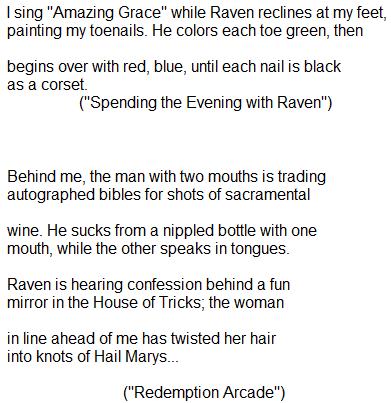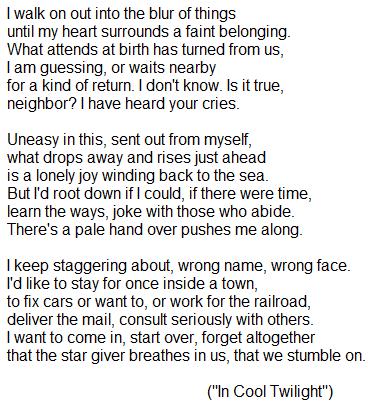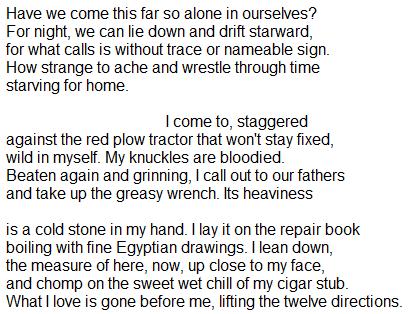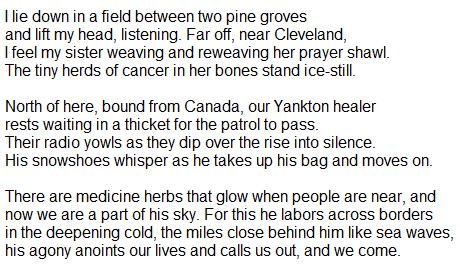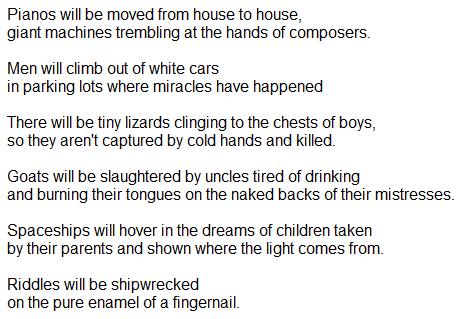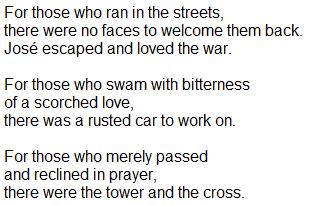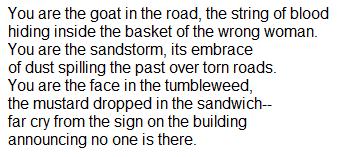An Unkindness of Ravens by Meg Kearney. BOA Editions, 2002. $12.95, 81 pps.
The Guests at the Gate by Anthony Piccione. BOA Editions, 2002. $13.95, 68 pps.
The Hawk Temple at Tierra Grande by Ray Gonzalez. BOA Editions, 2002. $13.95, 105 pps.
As Reviewed By: Marc Pietrzykowski
For all their cant about being shamen of the tribe or the unacknowledged legislators of the world, most poets exhaust the bulk of their ambition simply trying to build a career, and to this end the poet’s first book serves as a sort of letter of inquiry: regarding the position of versifier found posted at the far edge of cultural relevance…. No matter what advanced degrees one holds, poetic certification occurs only with that initial “significant publication,” and to aid in the process of certification we have developed the system of patronage-via-competition meant to generate cultural currency for the winners, as well as the more common kind for the judges and presses. As the judges involved (inevitably better-known poets themselves) tend to choose winners whose work either reminds them of their own work in a pleasant way or else reminds them of their own limitations without posing a threat to their position, the first book also serves as a fair indicator of the state of contemporary poetry. That Meg Kearney’s An Unkindness of Ravens, published by BOA Editions, comes to us without following the standard first-book-contest path to publication should provide hope that the mediocrity of contemporary verse might be transcended by an editors’ good taste, that space on prominent publisher’s shelves still exists for challenging and unconventional work. An Unkindness of Ravens, however, is anything but unconventional; while announcing its intent to satisfy the modestly challenging stylistic requirements of the contemporary poetic audience by providing us with state-of-the-art examples of craft, accessibility, and hipster elegance, it fails to display the sort of inherent need to exist that separates Lycidas from Our Summer of Love–the power to not only move the reader once, but to return them to the poems again and again.[private]
The flesh of Kearney’s poems is certainly willing; her careful constructions bear the reader along with nary a jarring moment, even when dealing with prickly emotional loci. The first four stanzas of “Anything Else,” for instance, revolve around an enjambment between the second and third, a gap so artfully placed that the language approaches the ideogrammatic:
When she gave up the baby the baby did not
cry, but she wished it would. She gave up her baby
by signing her name six times and they called it
surrendering. When it was born the baby had cried
immediately. That was the last time she had
heard it. The doctor in the coat white like
a chef’s said, 6 pounds, 14 ounces, Apgar
10, a murmur, a hole in the heart that will heal
itself. The nurse said, Yes of course it hurts
to walk I’m sorry we cannot allow you to feed it,
and the woman, lying on the bed, did not
protest. The nurse was dressed in white so white
the woman had to close her eyes as the baby was taken
from her. Too quiet–quiet baby aren’t you hungry
she thought though she could not keep anything
down…
That break between “heal” and “itself” encapsulates the poem so well, in fact, that the rest of the stanzas feel slightly superfluous, as they continue circling the feeling of separation without ever describing it as conclusively as does the earlier moment. This sort of creatively determined aimlessness often gets mislabeled “associative,” and such prolonged riffing on a theme or themes has become the central mode of the lyric poem–so central, in fact (and so unexamined) that it has outlived, I fear, most of its power to elevate, if that is indeed the intention. Not to say that this mode cannot be resuscitated, of course; the most successful poems in An Unkindness of Ravens possess the sort of narrative underbracing that all good lyric poems have, an intent that goes beyond simple musing. “Prologue to True Love: Chopin’s Waltz in A Minor, Op. 34, No. 2,” for example, inscribes just enough allegorical weight on the single circuit it makes back to the beginning, or perhaps, more properly, to a place that preceded the beginning of the poem:
The house is on fire,
yet the couple keeps
dancing. Her hand
on his shoulder, his palm
against the small of her
back can’t keep the music
from ending. Her filigreed
gown is tarnished, his
tuxedo’s come unstitched.
Soon they must pass
through the blazing door,
follow all those others
into the indifferent
street. Only Ashkenazy
will remain. He will
climb onto his piano
and lie down, ready
to admit the house
had always been
on fire, roof just
about to collapse.
To say that lyric poems have a narrative structure might bother some of the more suspicious poets among us, but it seems evident that the poem above serves its design far more than does a lurching exercise like “Ticket”:
I have a ticket in my pocket that will take me from Lynchburg
to New York in nine hours, from Blue Ridge to Stuy Town,
from blue jays wrangling over sunflower seeds to my alarm
clock and startled pigeons. If I had a daughter I’d take her
with me. She’d sit by the window wearing the blue dress
with the stars and sickle moons, counting houses and cemeteries,
watching the knotted rope of fence posts slip by while I sat
beside her pretending to read, but unable to stop studying
her in disbelief. Her name would tell her that she’s beautiful.
Belle. Or something strong, biblical. Sarah. She would tolerate
the blue jay and weep for the pigeon; she would have all the music
she wanted and always the seat by the window. If I had a daughter
she would know who her father is an he would be home writing letters
or playing the banjo, waiting for us, and I would be her mother.
We’d have a dog, a mutt, a stray we took in from the rain one night
in November, the only stray we had ever taken in, one night in our
cabin in the Catskills. It would be impossibly simple; two train tickets;
a man, a dog, waiting; and a girl with her nose pressed to the window.
Leaving aside the unfortunate decision to include the final two stanzas, “Ticket” leaves the reader with the uncomfortable sense that the poet simply wants to chat, and more so, wants to get something off her chest. Much like being trapped on a long bus ride with someone whose spontaneous overflow of powerful feelings has left them a bit incoherent, the various elements of “Ticket” seem to serve no other design than personal catharsis; perhaps the great mistake of contemporary poetry is the sense that catharsis for the author must equal catharsis for the reader. Sometimes it does, more often it does not, and confusing the two often causes the poet to devote her craft toward refining the personal effect rather than the public.
Another overused element in contemporary poetry that Kearney falls pray to involves dappling one’s poems with pop culture references and other sorts of jargon; Wordsworth endeavored to bring the language of the common man back to poetry not only to reject the constraints of “poetic” diction, but also because he saw modern, urban society as a corrupting, degrading force. When the contemporary poet folds elements of pop culture and the “common tongue” into their compositions, it frequently comes off as pandering, an attempt to reach a greater audience by using the language of sitcoms and self-obsessed hipsters, as Kearney does in by far the worst moment in the book, during the barely-a-sestina “14th Street”:
The Seinfeldism of the third line, the unconvincing faux-country twang of lines four and five, the absence of musicality (or metrical restraint) in the final line–so much is wrong here, it’s hard to know where to begin, or why. To be fair, Kearney uses her hipster referents elsewhere to much better effect, as in this passage from “Learning to Speak”:
The girl was afraid you would
forget me, that you would wake
to the empty room, a memory
of Pomerol still on your tongue,
and think only of the Blue Note,
the way Abbey Lincoln’s neck
curved and throbbed in the jazz-
thick dark.
Again, these elements serve the design of the poem, rather than serving as the design, as is the case with “14th Street.”
The poem cycle titled “Redemption Arcade” indicates that Kearney has greater aspirations than would be considered polite to discuss at a Writer’s Conference, and so the poems in this section are both better and worse than the rest of the book. Each poem in the section has a narrative voice and the character of a raven (who comes off as less of a trickster figure than a naughty familiar), and the style lopes further into domesticated surrealism; to read the entire section in sequence is to see intimations of a design both grand and disquieting in the hands of a poet unsure of exactly how to present it. Silly lines bump up against stunning ones in a manner more natural than, say, the forced jumbling of the Elliptical poets, creating moments either interesting or ridiculous but rarely, as with much of the rest of An Unkindness of Ravens, forgettable:
If the first book declares the sort of aspirations a poet has for her career, then we should hope that “Redemption Arcade” represents the leading edge of Kearney’s ambition and not just an experimental lark she will later discard in favor of more instantly accessible work, even if the latter path might lead to more bountiful reading fees and other awards. True poetic accessibility has nothing to do with speaking to an audience in the language they have become accustomed to, in any case; to surprise in the midst of the commonplace, one must first make the commonplace capable of surprise by translating it into something poetic.
***
Most of us realize, at some point in our lives, that the world has some serious defects, and that much of the rest of our existence will consist of maneuvering around them or climbing out of one of the fissures that suddenly opened up beneath our feet while we were so carefully maneuvering. The ways we choose to deal with this realization are many and varied: some become artists, some find god again and again, and quite a few simply never recover. Anthony Piccione seems to occupy both the first and last categories simultaneously; his poetics are the poetics of disappointment, and while he often manages a glance toward joy and its imaginary cousin, transcendence, these moments only help to convince the reader that such things constitute a different sort of failure. That his poems manage to shine as frequently as they do indicates either that his need to create is more deeply ingrained than his sense of life’s inadequacy, that the poems themselves arise from that sense, or else that in The Guests at the Gate, a posthumous collection published this year by BOA Editions, he is only playing a role, inhabiting a poetic persona that draws its clarity of vision from those spots where it is grafted so entirely onto the man that no distinction between the two is possible. Each of these three explanations is adequate at various points in the book, and each of the three also helps illustrate the many missteps Piccione takes, but only by consideration of all three aspects can we arrive at some reason for the book’s existence.
While it is true that without direct and prolonged knowledge of the individual, we cannot properly understand their motivations for creating poems, and perhaps not even then, we still can infer a great deal from the persona manifested the second the poet puts down the first line. The first line in The Guests at the Gate, from a poem titled “Note Bits,” reads: “How strange at the end of a day at the last of our century that we can still remember how to survive each other at all,” and so the book is set afloat on its own sea of befuddled discontent. The poem gradually moves behind a door, away from the necessity of public survival found so queer in the first line, and then to the apprehensive solace of the last line, where “[t]he phone bleats, the glassine envelopes quiver on the table, the t.v. yawns itself to death, the newspapers open, something keeps thumbing the buzzer, pawing the doorknob.” The struggle between private and public selves reappears throughout The Guests at the Gate, and in fact seems an informing principle of the Deep Image school that Piccione proudly claimed allegiance to–so proudly, in fact, that he was moved to call Robert Bly “a hero in this century” during a 1993 interview. Hero or not, Bly’s loose confabulation of Jungian psychology and sanitized Zen has spawned its fair share of devotees, and Piccione’s particular brand of Deep Image inclines toward the domesticated surrealism of James Wright; thus the struggle between the responsibilities of the public self and the self immersed in being a Deep Image poet often is revealed through evasively metaphorical imagery, imagery that slouches toward the mythological:
Although this description of the poet’s inability to affix meaning to the things of the world long enough to allow him the sort of natural existence he believes possible raises all sorts of interesting questions, the most relevant one has to do with the achingly awful last line, and why the poet chose to embrace cliché at that point. The central problem with the Deep Image poets in general and with Piccione’s work in particular lies in the map used to voyage inward; having reached the mazy depths of self, Piccione senses something else over which that self hovers and tries to describe it using the images laying about on the coastal shelf of his psyche. He never goes far enough to actually explode the individual ego, in other words, and so the struggle between the deep self and the public world. His poems accomplish much more when they juxtapose the internal and external directly, as in “Standing Still in the Pole Barn”:
The suggestiveness of the first and last lines becomes active when placed around the more palpable image in the center, and we receive a glimpse of the poet at work, fixing a tractor (or not, as seems the case), making poems, creating despite the disappointingly tangible world he has found himself immersed in, once he “comes to.” This act of coming to and recognizing the world works best when Piccione reveals his disillusionment; whenever he strains toward joy or what Mircea Eliade calls “that essential nostalgia of man,” that is, transcendence of the world while remaining part of it, he leans on cliché or enigmatic babblings like “I sink with the senses so full far out ahead / into a pool spilling with canned peaches” or “Go well, oh anyone awake and marveling, / pray hard for what you are about to receive.” Such lines would flop even in a poet given to soppy good cheer, and the bulk of The Guest at the Gate, while frequently soppy, has little to do with cheer of any kind.
What ultimately rescues The Guest at the Gate from joining the ranks of sad-sack poetic curiosities, however, is the appearance of a further layer of self-consciousness regarding persona. Certainly this persona finds existence frequently disappointing, and so he struggles to overcome this situation through poetry, but only during those moments of self-regard when Piccione eludes the habits of inspiration do we get the sense that persona and self have integrated, that he recognizes them as points along a spectrum of expression rather than as two objects whose lines blur in the glare of epiphany. In “Just as Something Calls,” for example, he pairs the poetic self with another, projected self through the medium of the poet’s sister:
It is in poems such as this, where Piccione draws parallels between his persona and his deeper self and then projects them through his persona onto the page, that the reader feels most included in the project. Instead of trying to reveal his inner world, or grieving about the outer one, “Just as Something Calls” manifests both worlds at once as it describes the relationship between them and, in the final stanza, the reason for bothering to do so. Several poems in The Guest at the Gate, such as “Watching Two People,” “Night Train Through Inner Mongolia,” and “Bow Season,” achieve this sort of multiplicity of perspective (although “Stephen Hawking and Fellini” mangles the mode rather pointlessly), and such moments occur within otherwise tepid works frequently enough to recommend The Guest at the Gate for anyone interested in how poetry can help us “love the outstretched world”–or at least come to terms with our need for it.
***
The Hawk Temple at Tierra Grande, Ray Gonzalez’s seventh book of poetry, displays the same general influences as the first six: the Bly-Wright Deep Image nexus, the interwoven Spanish and Latin-American surrealist tradition, and the struggle of a minority writer against what Gonzalez calls (rightly) the “racist literary canon.” The resulting concoction is both more and less than the sum of its parts; while Gonzalez’s vision and sense of craft (and six book’s worth of practice) help several of the poems in The Hawk Temple at Tierra Grande trace a distinct, memorable figure across the reader’s mind, by the end of the book it is difficult to deny the impression the one has read the same poem fifty-four times. There is no reason to consider this effect anything less than the result of an aesthetic decision, given the sort of persistent self-regard manifested on nearly every page of the book, and so the reasons for Gonzalez’s strict adherence to a specific poetic formula must lie in the formula itself.
The most immediate distinctions we can make between the poems in The Hawk Temple at Tierra Grande have to do with narrative coherence. While all reveal some general organizing principle, that principle is either vaguely exergasiac, involving the repetition of a thought (usually the one implied by the title) using different images; “There Will Be Centuries,” for example, begins thus:
This aggregation of clauses that could succeed the title (there will be centuries in which…) certainly can dazzle the reader, but repetition of the form quickly deadens its power and makes the reader pay more strict attention to the individual images rather than to way they further the poem. The second organizational principle Gonzalez favors is anaphora; eighteen of the fifty-four poems in The Hawk Temple at Tierra Grande use the repetition of a word or phrase at the beginning of a verse as the central structural feature. Overuse of the ‘list poem’ form causes the same difficulties as overuse of exergasia, and so the hypnotic effect of a poem like “For The Other World,” which announces its anaphoric intent immediately:
is soon supplanted by a sense of restriction, as with “You Are”; by this point (page 83), Gonzalez’s over-reliance on anaphora has turned a form based, after all, on repetition, into the equivalent of water torture:
The purpose of both these structures is to manifest meaning hypnogogically by repeating syntactical elements, and Gonzalez’s fixation on these particular forms surely must reflect a desire to affect the reader without recourse to more standard, ‘canonical’ structures, such as the linear progression of events. The cumulative result of his excessive reliance on repetitive forms, however, is that those few poems that develop in a more typical, linear fashion stand out so sharply from the rest of the book that their distinctiveness elevates them above the others; if indeed his use of those forms constitutes a political gesture, then Gonzalez has done himself a disservice by not exploring a greater variety of rhetorical approaches. That the anaphoric/exergasiac modes are part and parcel of the dominant canon is beside the point, if indeed Gonzalez’s reliance on them represents a position of canonical opposition, but of course Gonzalez may simply be drawn to these forms without necessarily considering them acts of resistance, or perhaps his own familiarity with these structures causes him to exaggerate subtle distinctions in texture and tone; in any case, whether he limits his aesthetic field due to a moral need to reject another sort of aesthetic or merely because he prefers them on whatever level of self-examination he is comfortable with, he engages in just the sort of behavior which created a canon in the first place, no matter the quality of intent behind his decision.
One could argue against the idea of self-limitation in Gonzalez’s work more forcefully if his intelligence and skill were not so apparent. The poem “Tiny Clay Doll with No Arms” is perhaps the most immediate example of both these qualities, and as such deserves full transcription here:
Given to me by my sister as a gift,
the tiny Indian doll stands with no arms.
Given to me so I can raise my hands
and stop the world from getting closer.
Something has been taken from here–
a day when reaching out was death.
Something lost
with my own hands.
The doll stands three inches tall,
its brown head wrapped in a red scarf.
No arms, as if I could look at a body
and not welcome it back.
As if I knew what happened
to my grip on those things.
The clay doll stands on my bookshelf.
It stares out my window.
It does not have any arms.
I don’t know why it was carved that way,
don’t know what it means,
why the invisible palms hold everything.
When I touch it with a fingertip,
it leans against a book.
It does not fall.
When I set it back
on its bare feet,
I carefully use both hands.
The repetitive structure is in place, and yet “A Tiny Doll with No Arms” moves beyond simple anaphoric prestidigitation by oscillating between the fantastic and the commonplace, the surreal and the deadpan. Several poems in The Hawk Temple at Tierra Grande, including but not limited to “Time Capsule,” “I Heard The Bells of the Ice-Cream Vendor Outside My Door,” and “See This,” move according to the same dynamic principle, and they are the most successful not because they are more canonical in form but because they are less a part of Gonzalez’s own canon and more the result of his mediation between the two.
The presumption that the sort of associative, image-driven logic characteristic of dream imagery and shamanistic revelation is somehow more sincere than the socially constructed discourse of our common waking lives is a common enough bigotry in the world of contemporary poetry. Dada, ultraism, surrealism and other associated movements continued Romanticism’s attack on the malignant exercise called ‘rational discourse’ in polite society, and later the Deep Image poets seized on the psychological dimension of surrealism in the hopes of staging a persistently hermitic plundering of the self, a spelunking that neatly melded the dregs of confessionalism and the early shoots of fragmented post-modern aesthetics with a community of poets that wore the sense of alienation caused by an public uninterested in poetry as a badge, if not of honor, then of exclusivity. The resulting poetic mode is not necessarily the dominant strain of contemporary American poetry, but it certainly has maintained a hardy presence, and it seems that what makes poems from that mode successful is the degree to which they manage to elude the tradition from whence they came. Ray Gonzalez performs this maneuver best when he translates his stream of consciousness into something more closely resembling rational discourse, as in “A Tiny Doll with No Arms,” or when he puts aside the shaman’s impulse in favor of the direct subject of his work, as in “My Earliest Memory”:
I am flying through the air,
held up as a one-year-old
in my grandmother’s right hand,
her arm straight up
as she lies in her bed,
trying to make me quit crying.
She made me fly every night,
my eyes staring at the votive candles
flickering on the nightstand
as if I knew something about the flames,
this joyful play at night
meaning I would see things
from above before I would
set my tiny feet on the ground
for the first time.
Giggling and flying;
my grandmother holding me up
by one strong hand,
telling me the boy who flies
will sleep better once
he leaves the earth.
The poems in The Hawk Temple at Tierra Grande that fade quickest are those involved in a greater project than simply persuading the reader of the worth of their subjects; the anaphoric and exergasiac poems attempt to convince the reader of the worth of their approach as much as they try to communicate something extra-poetic, even though their ostensible purpose is to transport the reader to an extra-poetic sensibility. The risk of making a form, or approach, or political imperative, or your own desire to impart a more direct apprehension of reality the subject of your poetics is that you may actually convince people you are right in doing so, and soon enough you will have nothing left to argue about but whether this book is more refined than the last, and what awards it should win: the things careers are made of, in other words.[/private]


